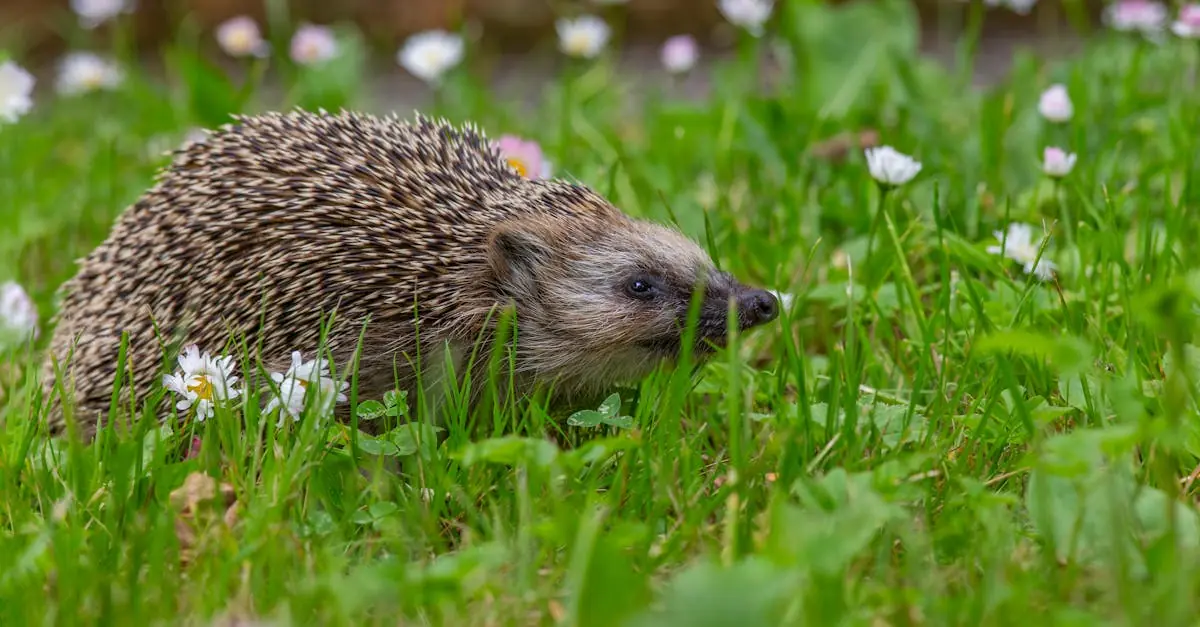Imagine a world where animals can roam freely without the fear of becoming a pancake on the highway. Enter wildlife corridors—the superheroes of the animal kingdom! These vital pathways connect fragmented habitats, allowing critters to strut their stuff across landscapes that humans have turned into concrete jungles.
Wildlife corridors aren’t just a nice idea; they’re essential for maintaining biodiversity and ensuring the survival of various species. Think of them as the express lanes for nature, where deer can dash and turtles can take their sweet time without worrying about traffic. As we dive into the fascinating world of wildlife corridors, we’ll uncover how these ingenious solutions help both animals and humans coexist harmoniously, proving that sometimes, it’s the little things that make a big difference.
Table of Contents
ToggleWhat Are Wildlife Corridors?
Wildlife corridors are designated pathways that connect fragmented habitats. These corridors allow animals to traverse landscapes without encountering barriers such as highways and urban developments. By facilitating safe movement, they enhance biodiversity and support the survival of various species.
Essentially, wildlife corridors act as lifelines for many animals. They promote genetic diversity by enabling the exchange of individuals between populations. Species that rely on these corridors experience reduced isolation, leading to healthier ecosystems.
Designing effective wildlife corridors involves understanding species’ needs and behaviors. Specific terrains, such as forests, wetlands, or grasslands, often serve as ideal corridor locations. Conservationists and planners consider these factors to ensure corridors effectively facilitate movement.
Construction of wildlife corridors often includes features such as overpasses or underpasses. These structures help animals cross busy roads safely. Various success stories highlight the positive impact of these corridors on connecting habitats and minimizing roadkill incidents.
Research shows that wildlife corridors also have significant ecological benefits. They help maintain ecosystem functions by allowing species to migrate in response to climate change. Additionally, corridors can strengthen resilience against habitat loss and fragmentation.
Collaborative efforts among governments, NGOs, and communities boost the effectiveness of wildlife corridors. Engaging local residents increases awareness and support for conservation initiatives. Sustainable practices and proactive management also contribute to the long-term success of wildlife corridors.
Overall, wildlife corridors represent a crucial element in wildlife conservation. Their establishment and maintenance are vital for ensuring the survival of many species in an increasingly fragmented world.
Importance of Wildlife Corridors
Wildlife corridors significantly contribute to ecosystem health. They provide essential connections between fragmented habitats, supporting the movement of species that might otherwise face isolation.
Biodiversity Preservation
Wildlife corridors play a key role in preserving biodiversity. They link diverse ecosystems, facilitating interactions among various species. By enabling wildlife to thrive in connected habitats, these corridors promote genetic diversity, essential for adapting to environmental changes. Research highlights that diverse populations are more resilient to diseases and climate shifts. Successful corridors also create sustainable habitats that support numerous species, enhancing ecological balance in regions impacted by human activity.
Species Migration
Species migration becomes easier with the establishment of wildlife corridors. These pathways allow animals to traverse long distances in search of food, mating opportunities, and suitable living conditions. Animals like deer or bears benefit from couplets that eliminate barriers like roads. During seasonal changes, migration paths ensure survival, allowing species to find needed resources. Effective corridors have been shown to increase the likelihood of animals successfully migrating, thus reducing the risks associated with habitat loss. Without such corridors, many species face the threat of extinction due to fragmented environments.
Types of Wildlife Corridors
Wildlife corridors come in two main types: natural corridors and man-made corridors. Each type plays an essential role in facilitating animal movement and maintaining biodiversity.
Natural Corridors
Natural corridors occur in areas where the landscape allows wildlife to move between habitats without human interference. Forests, riverbanks, and wetlands often act as these pathways, providing essential connections for various species. Many animals rely on these naturally occurring corridors for migration, foraging, and finding mates. For instance, migratory birds use river corridors to navigate long distances during seasonal changes. These natural pathways enhance ecosystem health and resilience, allowing species to adapt to environmental fluctuations.
Man-Made Corridors
Man-made corridors are designed to alleviate the negative impacts of urban development and infrastructure. Overpasses, underpasses, and wildlife bridges create safe crossing points for animals separated by roads or highways. Engineers and conservationists often collaborate to ensure these structures cater to the specific behaviors and needs of different species. For example, specially designed tunnels allow smaller animals like turtles to cross busy roads safely. By integrating wildlife corridors into infrastructure planning, communities support biodiversity and protect vulnerable species from habitat fragmentation.
Challenges Facing Wildlife Corridors
Wildlife corridors face various significant challenges, which can hinder their effectiveness in supporting animal populations.
Human Development
Human development poses a major threat to wildlife corridors. Cities, roads, and infrastructure encroach on natural habitats, fragmenting ecosystems. As urban areas expand, they often cut off migration routes. Wildlife must navigate increasingly complex landscapes to survive. Additionally, barriers such as highways and fences increase the risk of roadkill. Some species struggle to cross these obstacles, leading to isolation. Limited funding for corridor projects can compound these issues, with inadequate resources preventing the establishment of safe passages. Proactive planning and community engagement play crucial roles in mitigating these impacts.
Climate Change
Climate change presents another pressing challenge for wildlife corridors. Rising temperatures disrupt migratory patterns, forcing animals to adapt quickly to new conditions. Some species may find corridors no longer suitable for movement if habitats shift. Extreme weather events can damage infrastructural elements of these corridors, making them less effective. Many animals rely on seasonal cues for migration, and changing climates may alter these signals. Dispersal opportunities become critical as species face habitat loss due to climate effects. Strategies to enhance the resilience of corridors are essential for supporting biodiversity in an unpredictable future.
Successful Examples of Wildlife Corridors
Numerous successful wildlife corridors demonstrate positive impacts on species conservation and ecosystem health.
North American Initiatives
In North America, several notable projects highlight effective wildlife corridors. The Banff Wildlife Crossings in Canada features overpasses and underpasses, significantly reducing animal-vehicle collisions. These crossings enable safe passage for over 20 species, including bears and elk, while preserving natural migration routes. In the United States, the Florida Wildlife Corridor stands out for its ambitious goal to connect 18 million acres of protected land, allowing diverse wildlife, such as panthers and tortoises, to thrive despite urban development pressures. Collaborative efforts among state agencies, NGOs, and communities enhance the implementation of these crucial initiatives.
International Case Studies
Internationally, numerous corridors showcase the significance of wildlife connectivity. The ecoducts in the Netherlands serve as prime examples, allowing animals to cross busy highways safely while preserving habitat integrity. These structures benefit various species, including deer and badgers. In Bhutan, the creation of wildlife corridors has been essential for protecting the endangered tiger population. Strategic land agreements between governmental bodies and local communities facilitate the movement of tigers between different habitats. These global initiatives highlight the importance of integrating wildlife needs into land-use planning for continued biodiversity preservation.
Conclusion
Wildlife corridors are crucial for the survival of many species in a rapidly changing world. By connecting fragmented habitats they promote genetic diversity and enhance ecosystem resilience. These pathways not only facilitate safe migration but also mitigate the impacts of urban development and climate change.
Successful examples from around the globe illustrate the importance of collaboration among governments communities and conservationists. As awareness grows the need for effective wildlife corridors becomes even more apparent. Protecting these vital lifelines is essential for preserving biodiversity and ensuring a healthier planet for future generations.













